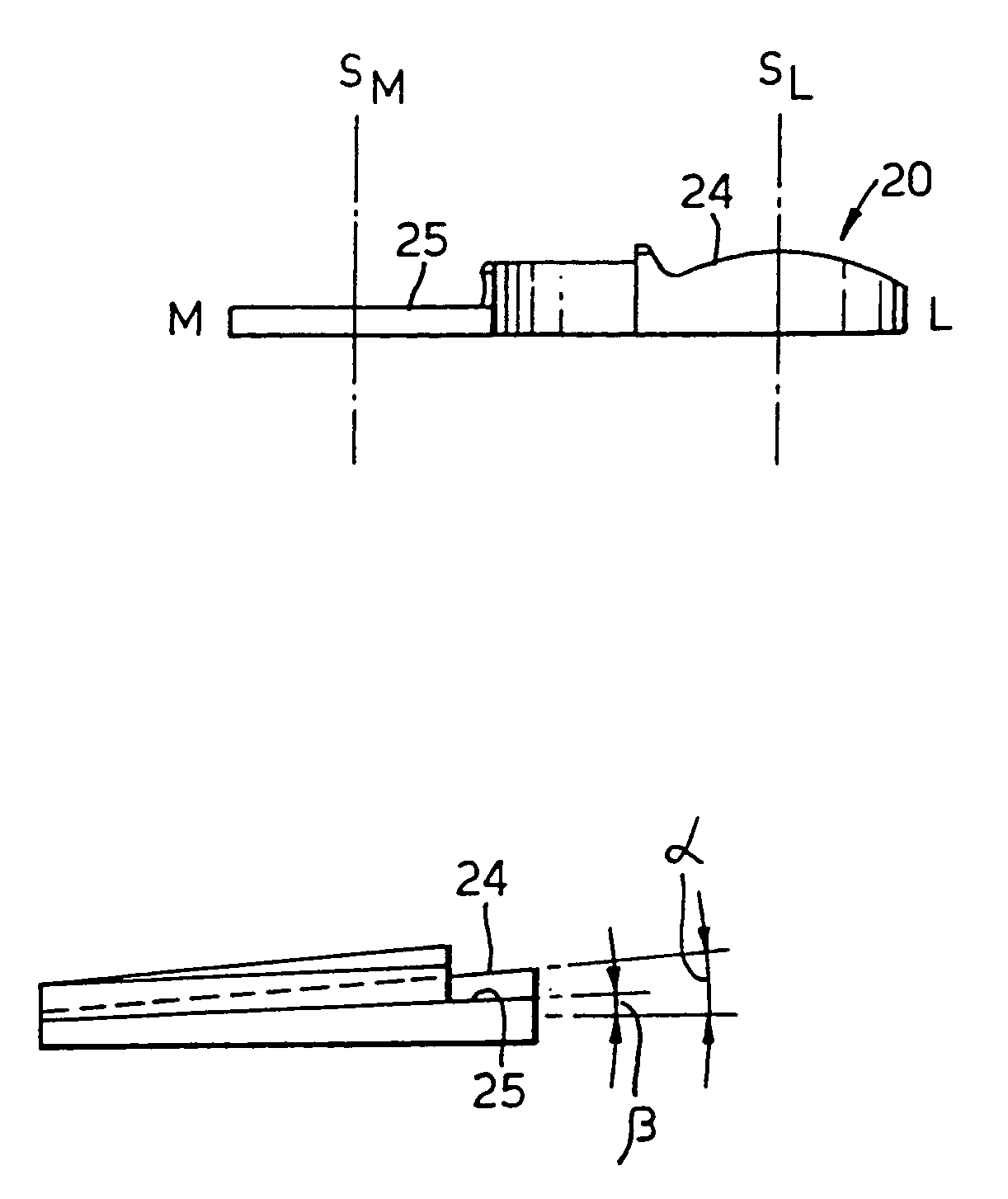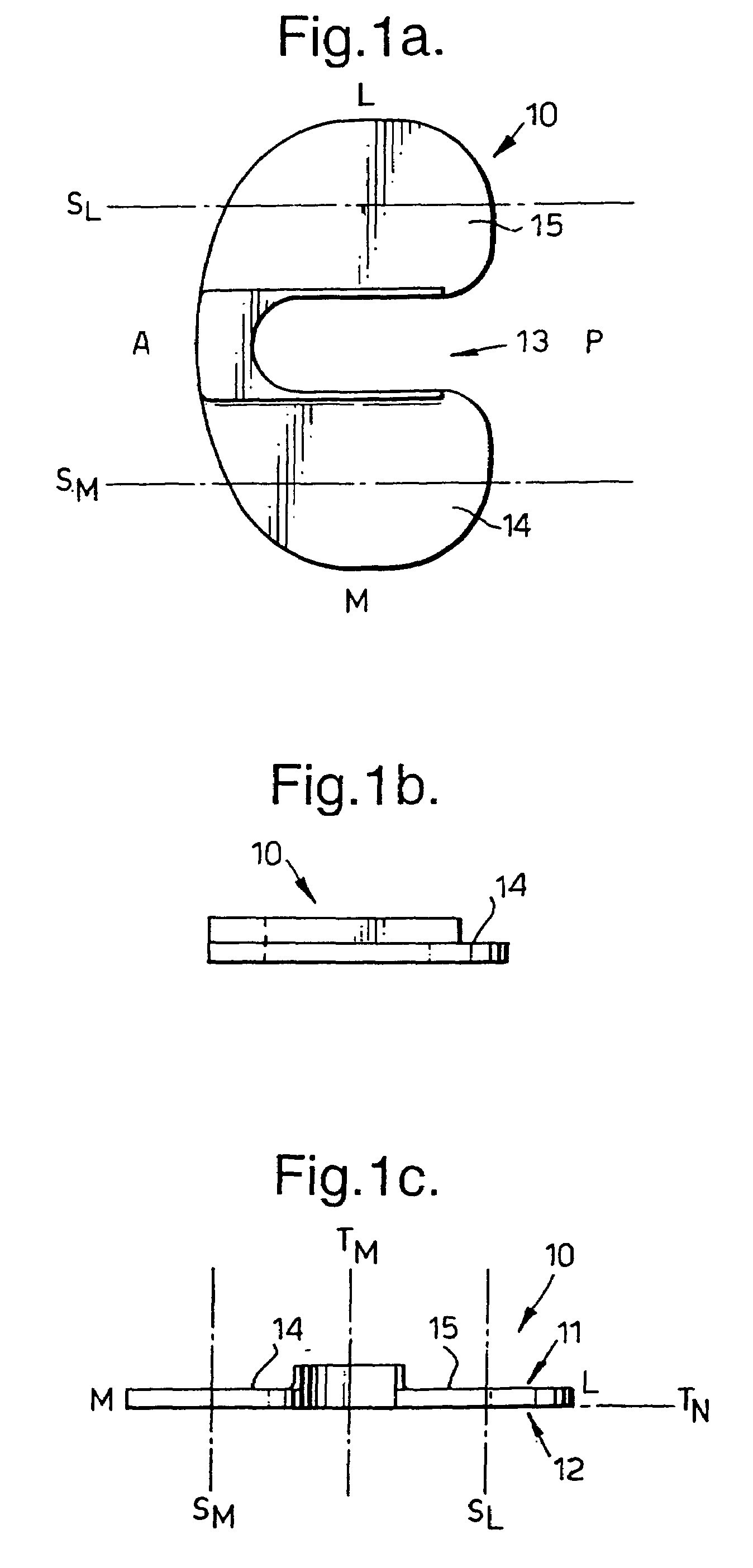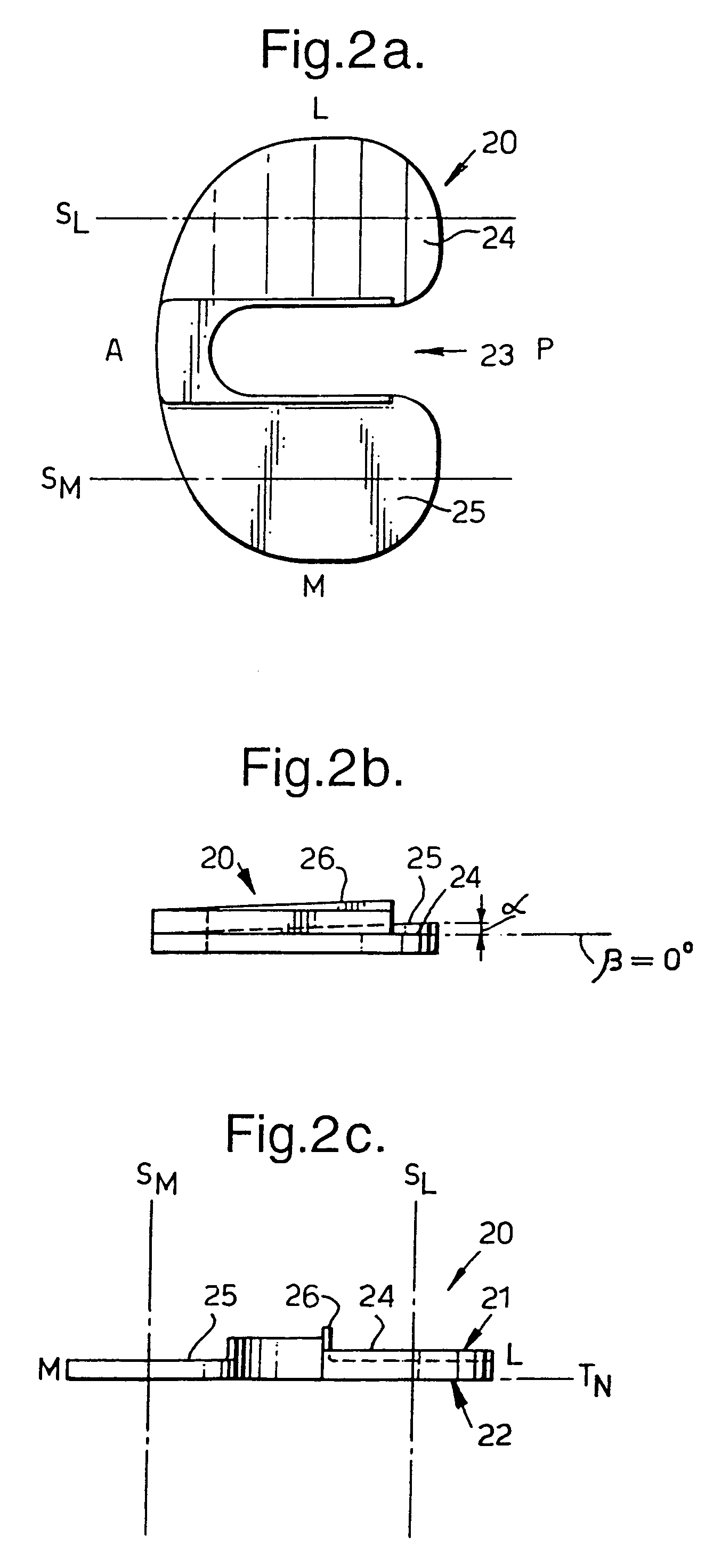Tibial component
a technology of tibial parts and components, which is applied in the field of knee joint replacement, can solve the problems of limiting the success rate of such replacements, and affecting the quality of replacements
- Summary
- Abstract
- Description
- Claims
- Application Information
AI Technical Summary
Benefits of technology
Problems solved by technology
Method used
Image
Examples
first embodiment
[0035]FIGS. 2 and 3 illustrate right and left versions of a bicompartmental tibial tray component 20 in accordance with the invention, similar to the-conventional tibial tray component illustrated in FIG. 1. The component also has a first, upper, major surface 21, which acts as a bearing articulation surface, and a second, lower, major surface 22, opposite the first surface, for attachment to the tibia (not shown). By adjusting the angle of inclination in the sagittal plane of the lateral and medial bearing regions (24,25) to be different, the behaviour of the prosthetic knee joint can be arranged to reduce the likelihood of dislocation in the lateral compartment.
[0036]FIGS. 2 and 3 show the plateaux (24, 25) as flat surfaces inclined to each other. In surgery, a single saw guide is used to saw the surfaces of the lateral and medial compartments of the tibia parallel to each other, preferably at an angle of approximately 7.5° to the horizontal plane, normal to the major axis of the ...
second embodiment
[0040]FIG. 4(a) to (c) shows the invention incorporating a component (20) for a profiled meniscal bearing to provide added stability. In this embodiment, by making the bearing surfaces of convex, curved form, the resistance to dislocation can be further enhanced. The tibial plateaux are inclined to each other in the sagittal plane as in FIG. 2, such that, in situ, a plane fitted to the surface of the bearing region in the lateral compartment (24) will be inclined at a lesser angle to the horizontal than in the medial compartment (25). The curved bearing regions (24, 25) shown are defined by convex surfaces of part-cylindrical shape. The surfaces can also be defined by convex surfaces of part-spherical shape. As shown in FIG. 4(d), if only one compartment is provided with a curved surface, advantageously, less bone removal may be required. The medial bearing region can be flat, with the lateral bearing region convex as shown in FIG. 4(d), or alternatively, the lateral bearing region ...
PUM
 Login to View More
Login to View More Abstract
Description
Claims
Application Information
 Login to View More
Login to View More - R&D
- Intellectual Property
- Life Sciences
- Materials
- Tech Scout
- Unparalleled Data Quality
- Higher Quality Content
- 60% Fewer Hallucinations
Browse by: Latest US Patents, China's latest patents, Technical Efficacy Thesaurus, Application Domain, Technology Topic, Popular Technical Reports.
© 2025 PatSnap. All rights reserved.Legal|Privacy policy|Modern Slavery Act Transparency Statement|Sitemap|About US| Contact US: help@patsnap.com



